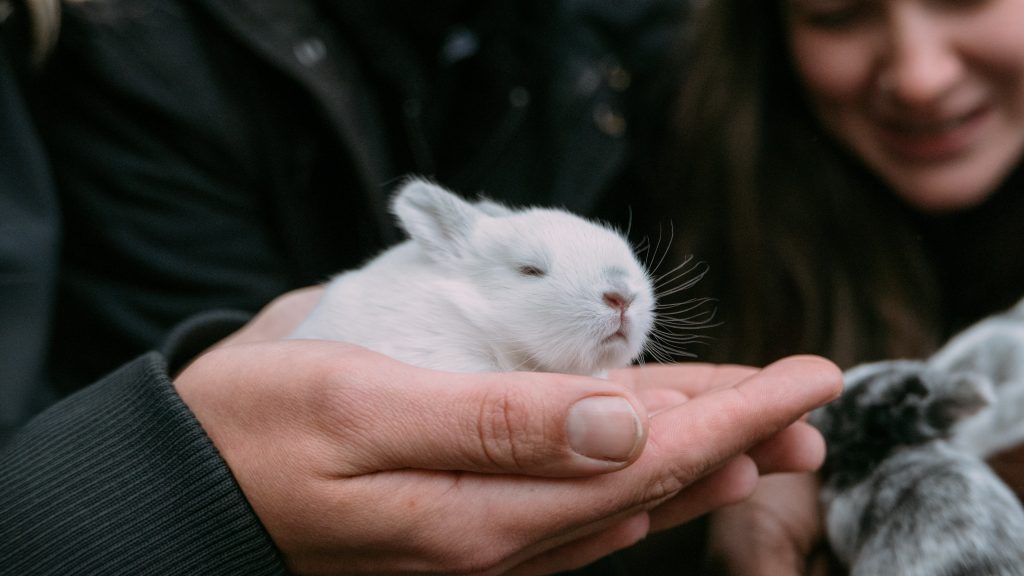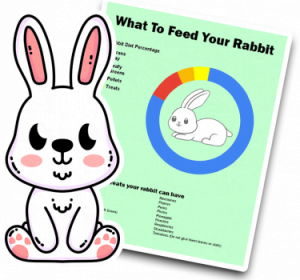

Baby rabbits, also known as kits, are born helpless and blind. They weigh around 1-2 ounces at birth and are entirely dependent on their mother for survival. Their ears and eyes are closed, and they have no fur or teeth. The mother rabbit’s milk provides them with all the necessary nutrients they need to grow and develop.
The name given to a baby rabbit can depend on its age and gender. A young rabbit is known as a kit, kitten or bunny. However, the term bunny is often used to describe any rabbit, regardless of age.
You should be prepared for their birth by creating a nesting area if you’ve got a pregnant doe. This should be a small boxed area where your doe can mix her fur with hay to create a warm and clean birthing area.
Your doe may create a nest themselves, they will pull hay into a box and shed fur during this time.
The pregnancy for your doe can last around a month, from 31 to 33 days. You should leave your doe to perform the birthing process on her own, there should be no need to assist her as she will be very independent.
Every morning, you should check the nesting area for a new litter of kits, if there are any kits who didn’t survive, we highly suggest removing these after taking the mother away from the nest.
As a side note, you should also remove the placenta & any afterbirth.
If there are more than 8 kittens, you should contact your veterinary practice. This is because they may be too many kits for the mother to handle, and this can lead to abandoning the litter.
During this process, you may need to hand-feed the abandoned kittens, but these attempts are usually unsuccessful.
Once the kits are born, you should be safe to handle them as the mother will be familiar with your scent. However, you should make sure the environment is suitable.
Keep the temperature in that room at around 15°C (59°F). If the room is cold or the kits feel cold, you can use a hot water bottle (with warm water, not hot water) or, even better, a heating pad that’s been left to cool down a bit.
Once the kits are born, the mother will need constant access to fresh food and water. Change the water every few hours (preferably using a bowl), this will allow the mother to consistently provide fresh milk to feed the litter.
Side Note: It’s not unheard of for a doe to eat her kits should she not be receiving nutrition
Your doe won’t always want to nurse her kits, like any mother, she will want time away from her babies. If your kits have round tummies and are nice and warm, they should be fine.
Typically, if your kits still make lots of noise, they require nursing. Call your local veterinary practice if they are making lots of noise, and it’s been 8-12 hours.
While handling the babies, try to do this as little as possible. You can handle the kits when you’re concerned for their well-being, as such, you should look out for these signs:
If your doe is pulling up fur but not feeding your kittens, there may be a chance they require oxytocin. Your veterinarian can help with this as this will help with milk production.
Yes, letting the mother do her own thing is perfectly fine. As long as she feeds her litter and occasionally looks after them, there are no problems.
If you can, leave the parenting the mother, she will only feed her babies twice a day and can often leave for hours at a time. This doesn’t mean they are abandoned. It simply means she’s busy exploring elsewhere.
Your kits will not learn how to use a litter box purely because their attention span is too small. As they are very young, they will likely use the corner of their hutch/cage, so if possible, place a small toilet there for them.
Unfortunately, this is near impossible. You will be unable to revive a dead kit.

By entering your email address you agree to receive emails from Cottontailclub. We'll respect your privacy and you can unsubscribe at any time.